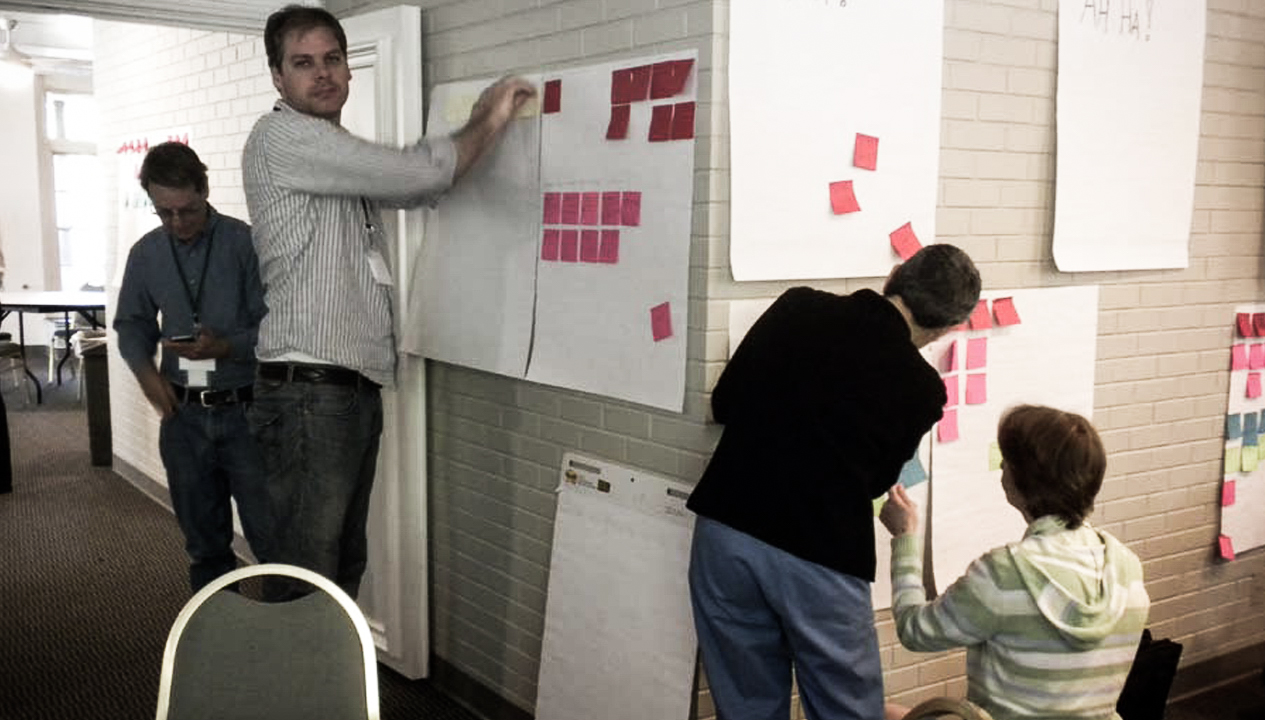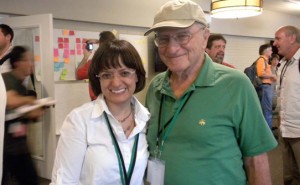Guest Blogger Liliana Becerra (Product Design, Faculty) shares her experiences participating in the National Collegiate of Inventors and Innovators Alliance’s (NCIIA) first Sustainable Vision Teaching Lab held at Colorado State University.
About a month ago I was offered the opportunity to attend and participate in the first Sustainable Vision Teaching Lab hosted and organized by NCIIA – National Collegiate of Inventors and Innovators Alliance – in Colorado State University; together with my colleague Nathan Allen, both of us Faculty of the Product and Grad ID Departments at Art Center College of Design.
As a general background NCIIA is an alliance of faculty and students working to advance the teaching of invention and innovation in American higher education. This practice is highly and mostly rooted in focused innovations seeking to benefit under-resourced populations through scalable solutions. NCIIA has awarded several grants to Art Center College of Design during recent years to support the creation and incubation of academic projects on design for social impact hosted by Designmatters, the social impact department of the College.
I had had the opportunity to meet some of the people from NCIIA earlier on when I first came to “Open Minds” the NCIIA annual conference in Washington D.C on March 2011 to participate on a panel about lessons learned from two of my recent classes “Creating Social Value Through Design” in Lake Atitlan, Guatemala and “Safe Agua” in Santiago, Chile. Already during my first interactions with NCIIA members, I realized that most of them had an engineering background while design professionals rather few.
When I first arrived to the Sustainable Vision Teaching Lab on June 2011, it was slightly intimidating and humbling to suddenly realize I was part of a group of people who by profession call themselves inventors and innovators, after all, the word innovation alone has been overused and misinterpreted during the last decade, losing a lot of validity and excitement.
Paul Polak introduced the conference by explaining his latest project called “D-Rev” a non-profit organization seeking “to create a design revolution by enlisting the best designers in the world to develop products and ideas that will benefit the 90% of the people on earth who are poor, in order to help them earn their way out of poverty” and then he emphasized to all of us attending the conference “that is why you all are here”.
With such high expectations I decided to focus on listening and learning as much as possible from my fellow professors from other universities, and the conference organizers and mentors Amy Smith, Paul Hudnut and Paul Polak. I asked as many questions as I could and organized all my thoughts and learning’s into a matrix targeting the development of the academic plan for “Safe Agua Peru” an up and coming TDS class Designmatters is launching this fall with the Environmental and Product Design Departments, in partnership with Un Techo Para Mi Pais. The project is a recipient of an NCIIA Sustainable Vision Grant.
From a design perspective, it was interesting to be immersed in the creative process typical of engineering programs where a rather complex terminology prevails. All projects for social enterprise that were presented included very specific and clear technologies with their corresponding roll out business plans, companies types, customers, supply chains, investors, goals for ROI (Return on Investment) and for 3BL (Triple Bottom Line).
The main focus of the academic projects about design for social impact I have been working on so far, revolves around using design as a powerful tool to change people’s lives while developing character and embedding a sense of urgency into our young design students. Most of our field research processes are based on observation, collaboration, learning by doing and establishing great levels of empathy and trust with those who we are designing with. Beyond these goals, we would normally rely on the support of local NGOs to create business and rollout plans for our projects, which, so far have been very successful.
Looking at things from both sides of the spectrum, as much as I believe that current projects and processes focused on design for social impact could and should benefit from setting specific business goals, I also think that having a focus only on new technologies and the engineering behind them should not be the ultimate goal for social entrepreneurship and change. It is crucial to look beyond scalability, business, profit and technical solutions and ask ourselves first the question: in the long term, what are we empowering people to accomplish?
At the end of the conference, I had a chance to chat with Paul Polak for about two minutes. Other than telling him how inspired I was by his words and his work; I gave him a copy of our Safe Agua book. I told him about the focus of our project, which was to create solutions for carrying, storing and using water for people who live in areas with no access for running water in the slums of Santiago, Chile. As he listened to my story with a great smile in his face, quietly looking through the pages of the book and paying close attention to the six interconnected projects that resulted as an outcome; I was wondering, what was going through his mind. Then, when my two minutes were up, he looked at me still smiling and finally said: “what you are doing is much more difficult and complex than the projects I usually do, this is very inspiring. Thank you.”
After my brief conversation with Paul Polak – and a quick picture of course – I left the conference thinking that in the end we were are all inspiring and learning from each other. We are actually in the right place at the right time; a space where brilliant minds collide to create intersections of innovation than can actually change the world. Although I still feel humbled about the task ahead, I strongly feel that working in cross-disciplinary teams with a mix of skills and backgrounds is a must in order to move forward and of course, I am ready for the challenge of being part of the “Design Revolution” project.


